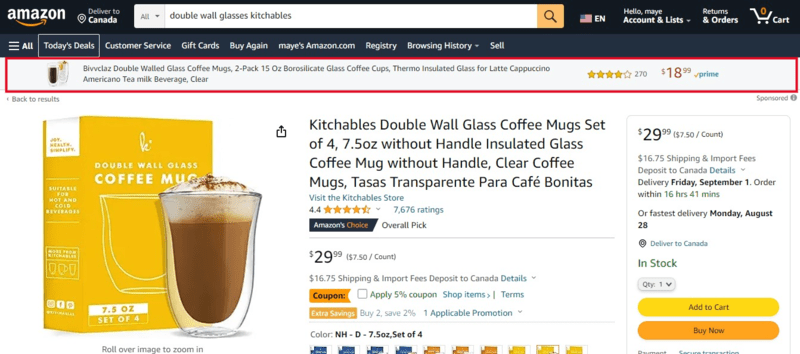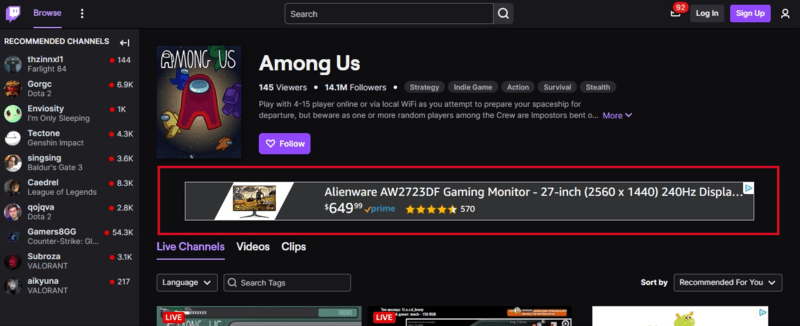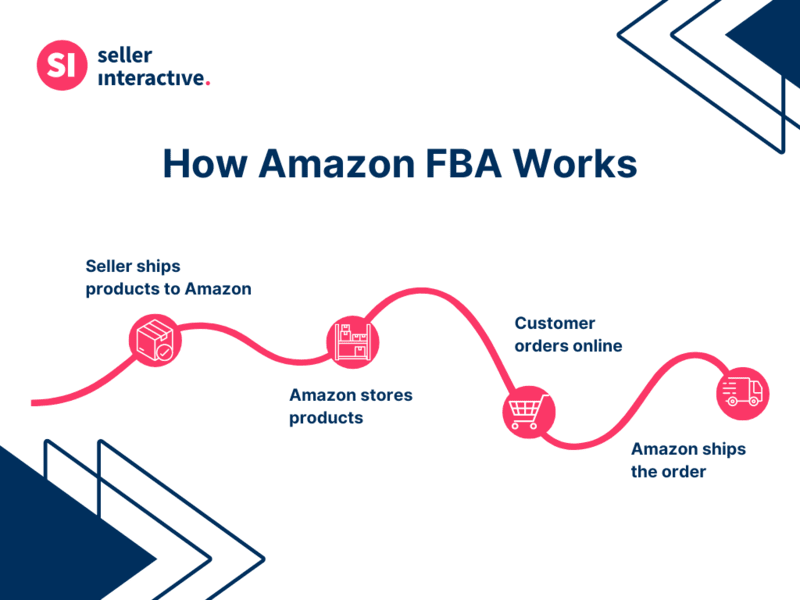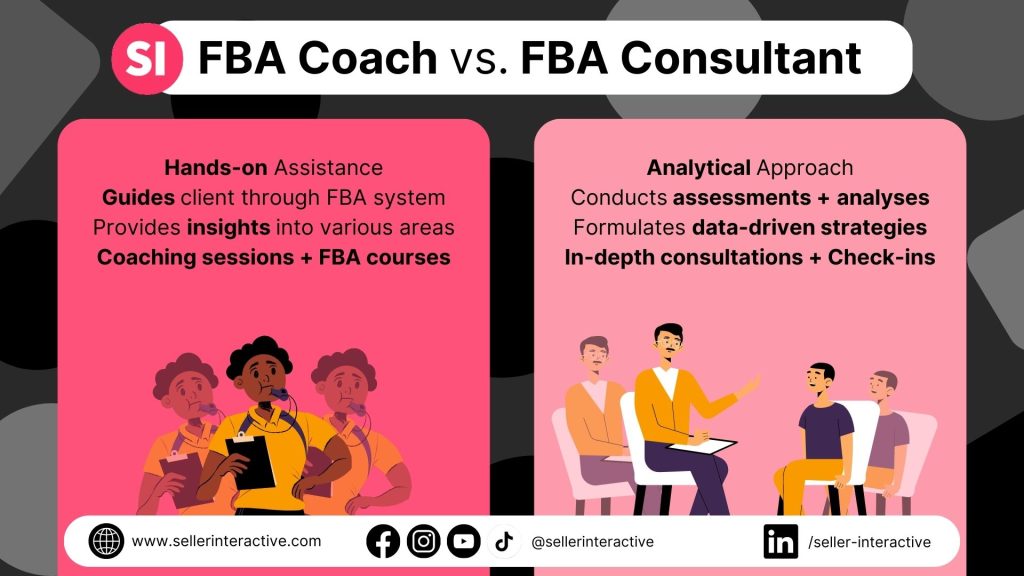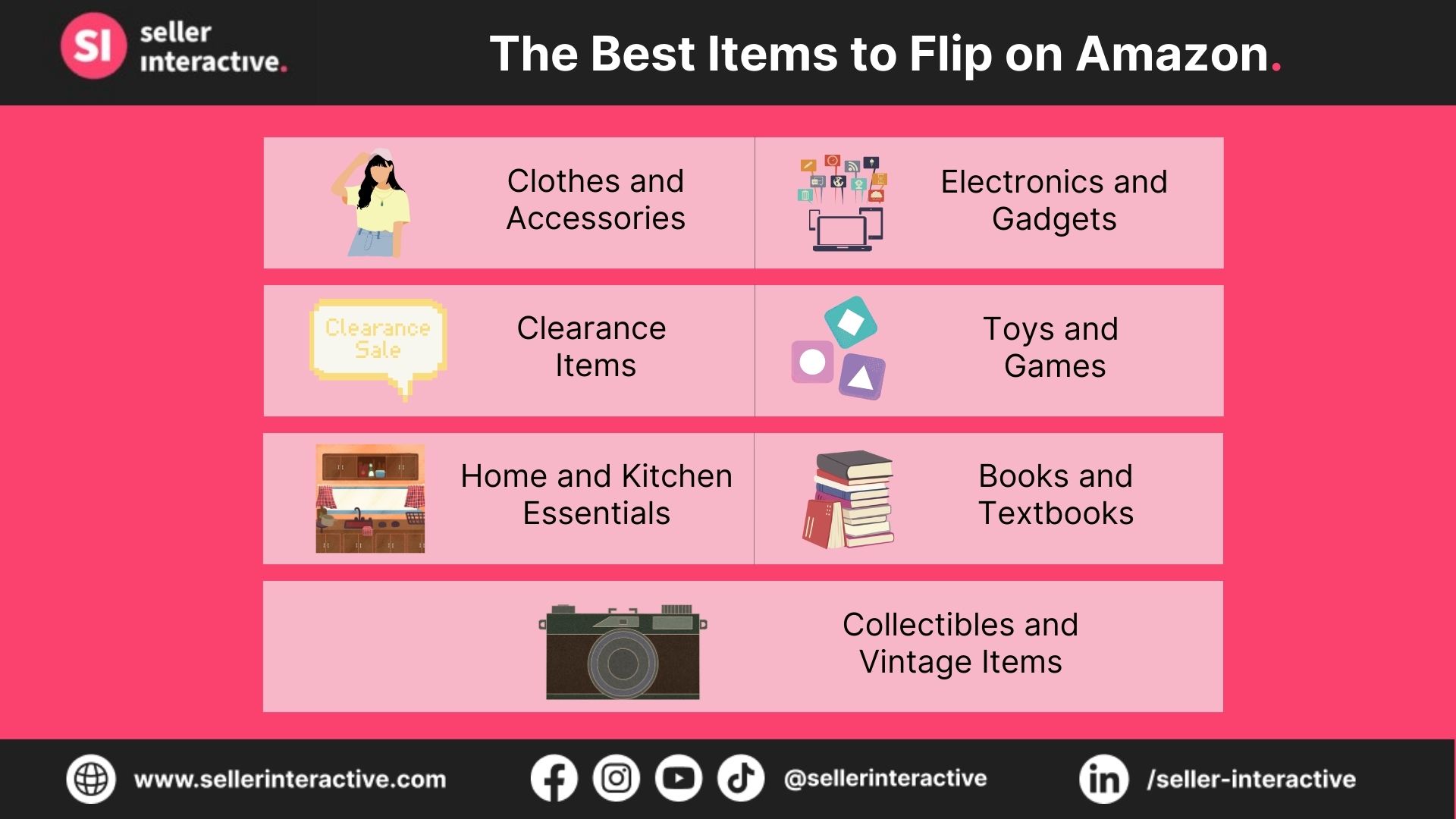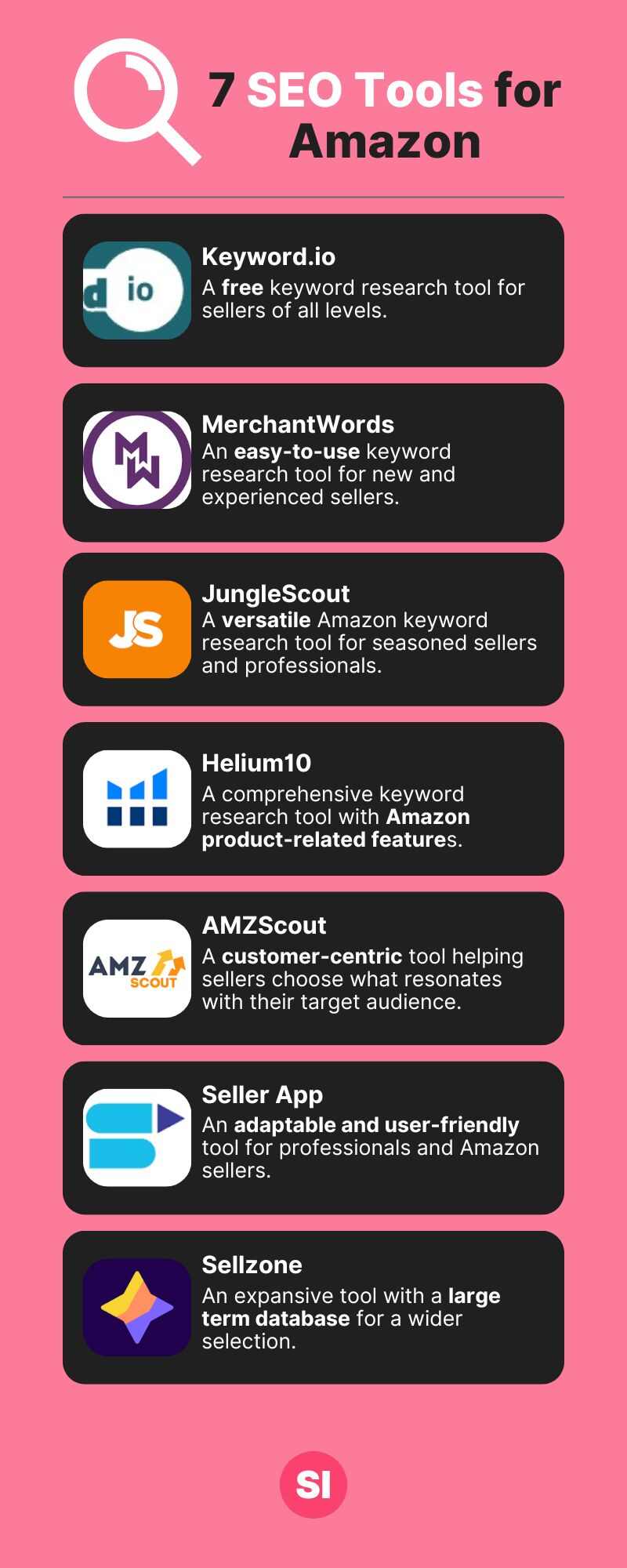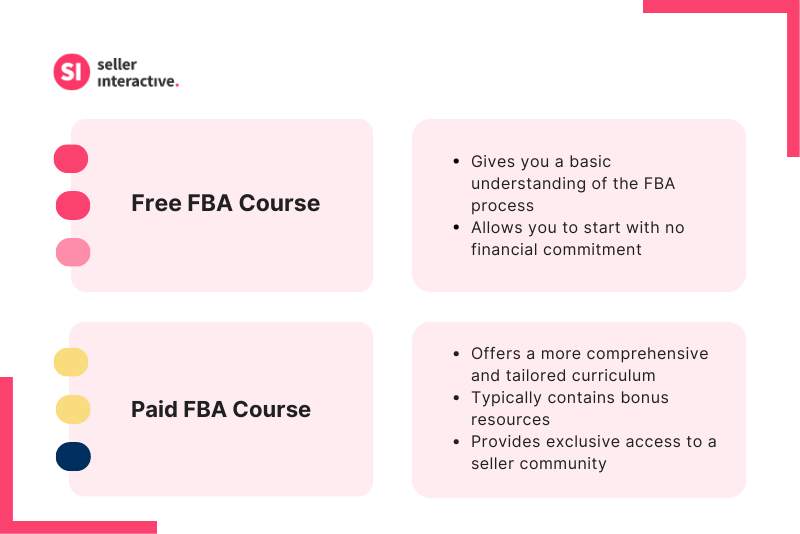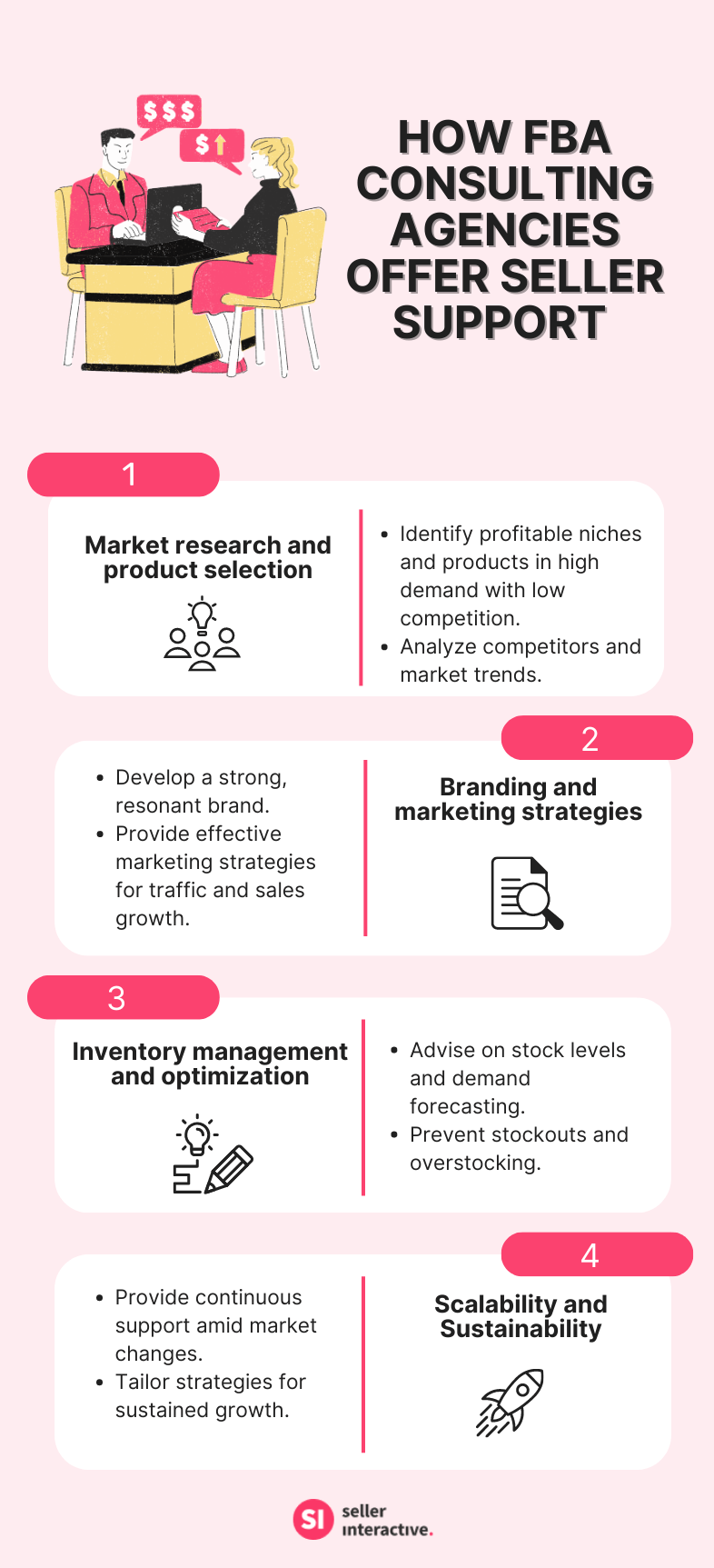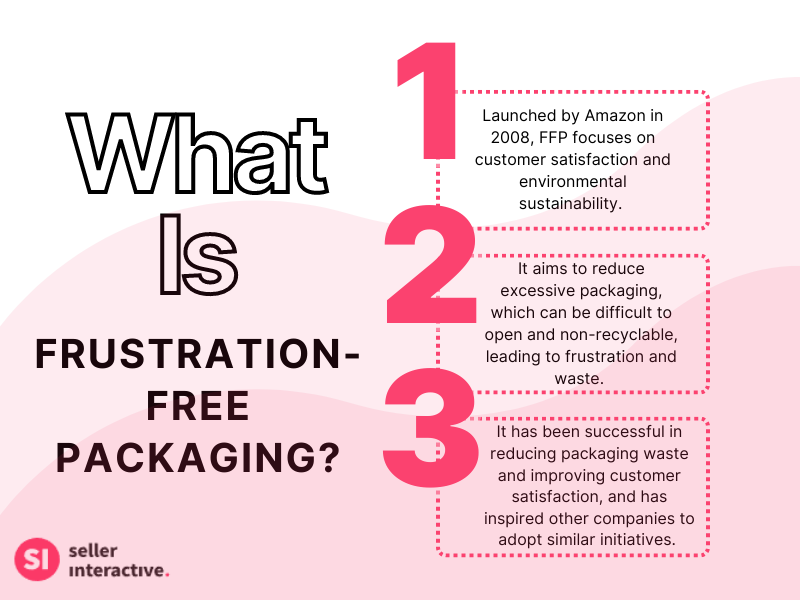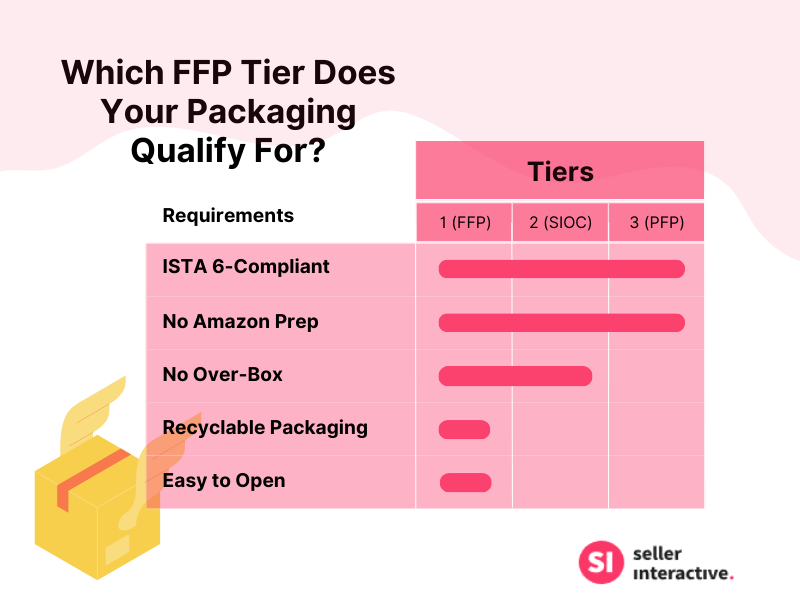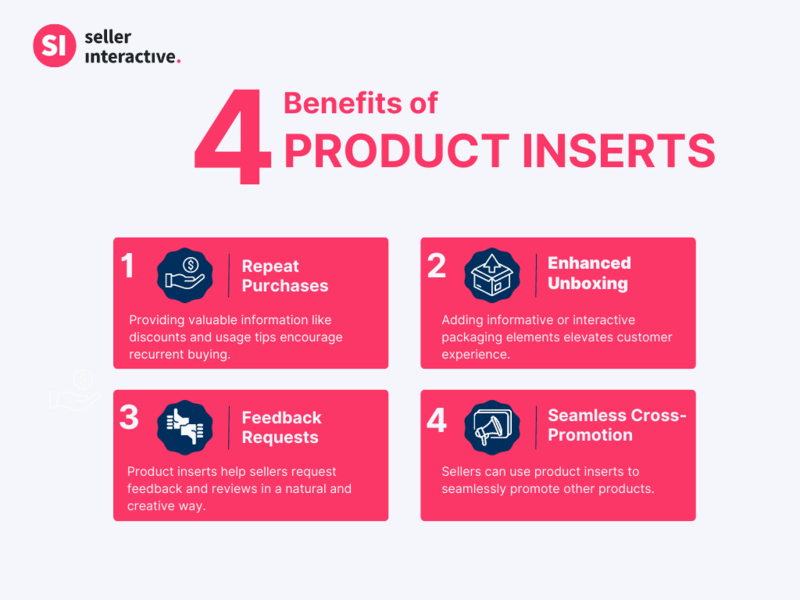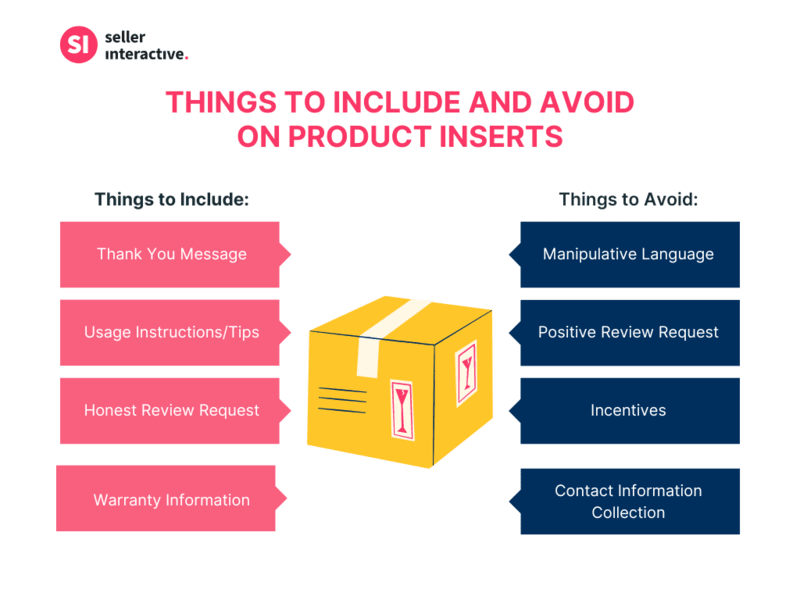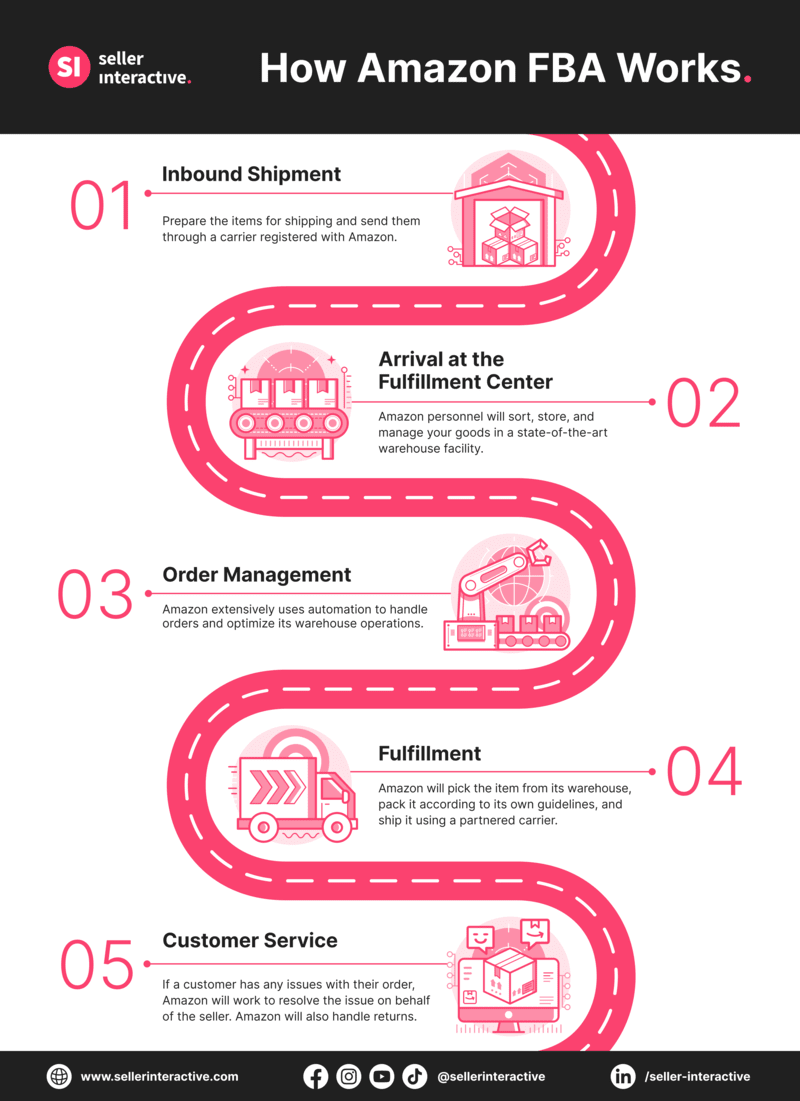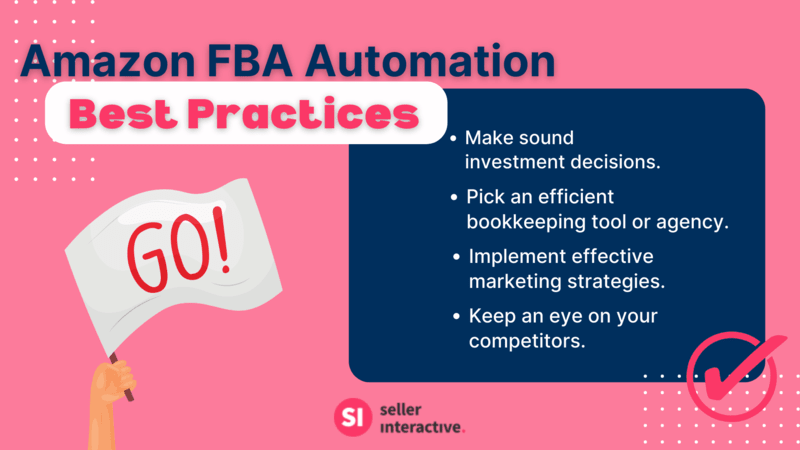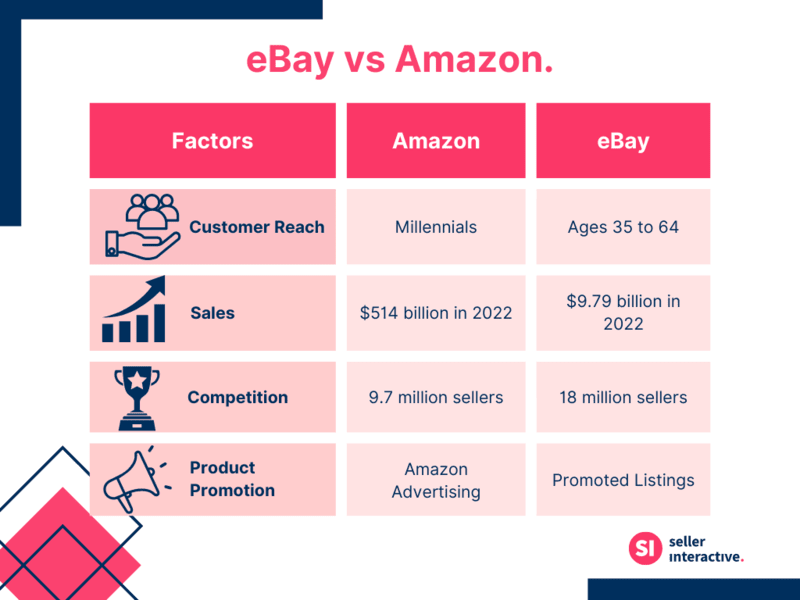Are you stuck in choosing Amazon FBA vs. affiliate marketing? Both are powerful ways to start a profitable business online. But which is best for you? Which model has the highest earning potential? Are there hidden costs in both systems?
In this blog post, let’s dive deeper into these two business models. By the end of this blog post, you can decide which program is right for you.
What is Amazon FBA?
Sellers can keep their products in Amazon's fulfillment centers thanks to the Fulfillment by Amazon (FBA) program. Amazon stores, packages, and sends the product on behalf of the seller once a customer creates an order.
This means sellers no longer have to worry about storage space or shipping logistics, as Amazon handles everything. Because of these, many sellers on Amazon choose to invest in Amazon FBA. According to Statista, 73% of sellers on the platform use Amazon FBA.
How Does Amazon FBA Work?
To start selling with Amazon FBA, you must create an Amazon seller account and enroll in the Amazon FBA program. Send your products to Amazon's fulfillment centers as soon as they are prepared for sale. Your products will be stored in an Amazon warehouse until a customer makes a purchase.
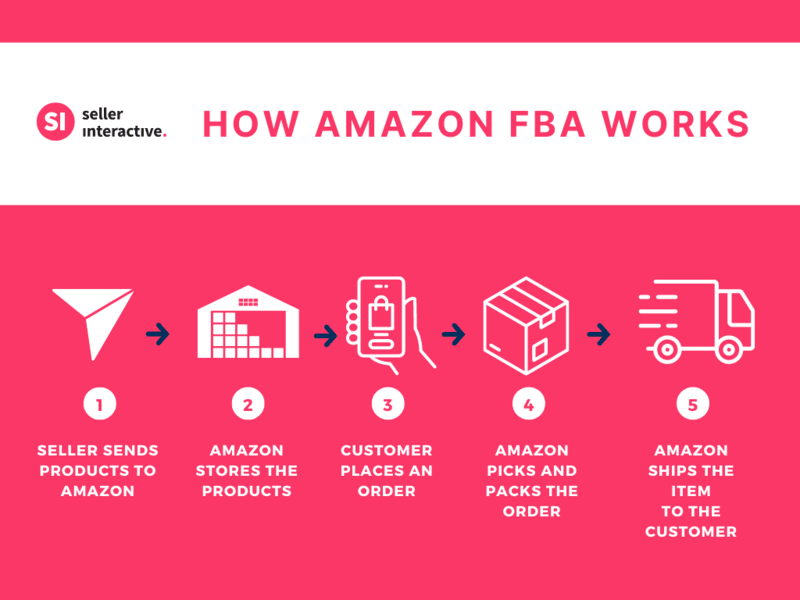
Advantages of Amazon FBA
There are 1.9 million active sellers on Amazon. Are you curious why 73% of them chose this fulfillment program? Take a look at the following benefits of Amazon FBA:
- Lower Shipping Costs
With Amazon FBA, sellers can save 32% of their shipping costs per unit. Shipping costs are included in your Amazon FBA fees. Aside from shipping discounts, your items will also be eligible for Amazon Prime Free Two-Day Shipping and free shipping.
- Customer Service Management
If you want to be a successful Amazon seller, you must focus on what matters most—selling and scaling. But what about responding to customers’ inquiries or handling product returns? Amazon FBA handles customer inquiries and returns, relieving you of that responsibility.
If customers want to return a product, Amazon’s customer service will help direct them to their online returns center. Amazon FBA’s customer support is also open for customer inquiries via phone and email, day and night.
- Higher Chance to Win the Buy Box
Amazon prioritizes FBA sellers when determining who “wins” the Buy Box. FBA sellers often have a higher chance of winning the Buy Box due to the trust and reliability associated with Amazon handling the fulfillment.
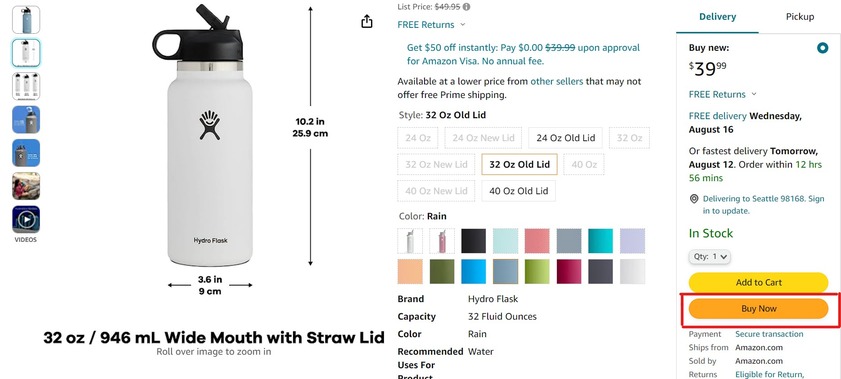
The Amazon Buy Box appears on the right side of a product listing. It allows users to purchase a product directly from the product detail page. Most Amazon sales go through the Buy Box, which is why winning it has become a big deal for Amazon sellers.
- Access to Fulfillment Services
Amazon's comprehensive fulfillment services allow you to concentrate on expanding your business while they manage the logistics. Amazon’s fulfillment centers have advanced technology and expertise to efficiently handle storage, packaging, and shipping.
You can choose from specialized services that don’t require new investments in your resources, such as:
- Amazon Global Logistics
- Multi-Channel Fulfillment
- and more
Disadvantages of Amazon FBA
Now that you know the pros of enrolling your online business in Amazon FBA, let’s explore its downsides:
- Higher Costs
While it’s great that Amazon doesn’t charge extra for free shipping and specialized services, Amazon FBA still incurs fees. Monthly storage and shipment fees could affect your profit margins.
Amazon FBA offers convenience and benefits, but these come at a cost. It’s also important to note that FBA fees can add up, especially if you have larger inventories.
- Continuous Inventory Management
As an FBA seller, keeping track of your inventory and ensuring that your products are always available in Amazon’s fulfillment centers is important. While it’s good that you no longer have to manage customer service and product returns, you’re still responsible for inventory management. Not doing it can lead to stock shortages and missed sales opportunities.
What is Affiliate Marketing?
Affiliate marketing is an online business model where you market other people’s products on behalf of a company (Amazon) and earn a commission for each sale that results from your referral. Affiliate marketers promote items via social media, websites, blogs, and email marketing.
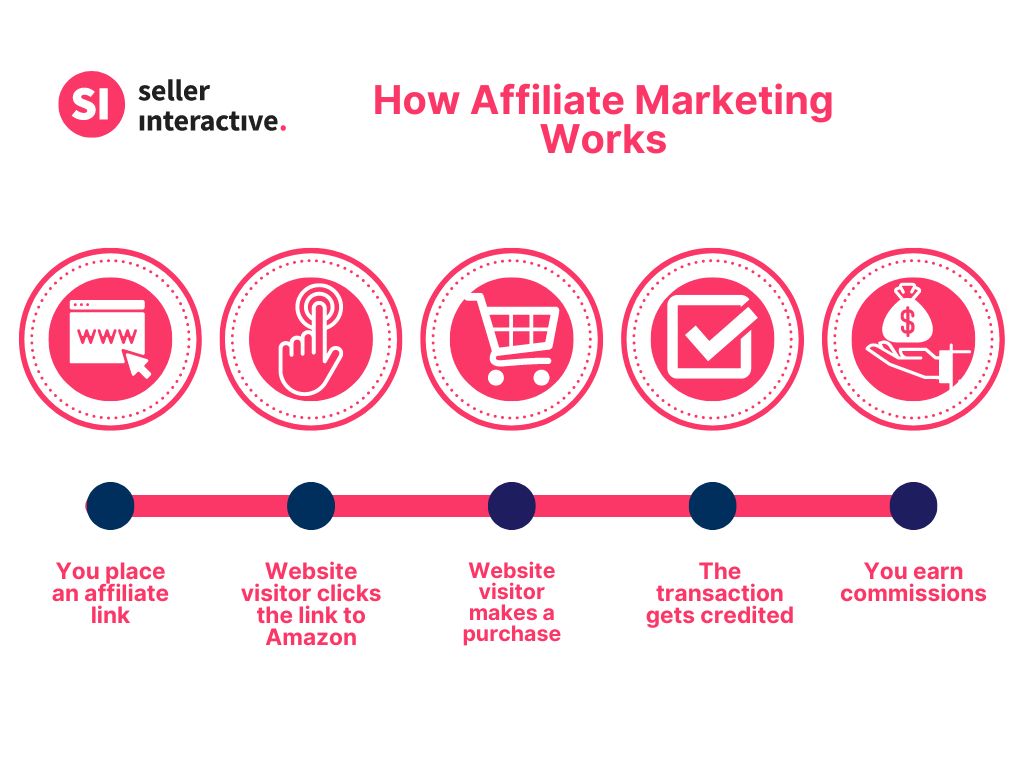
How Does an Affiliate Program Work?
Amazon Associates is Amazon’s affiliate program. It allows you to promote eligible Amazon products with unique affiliate links on your website or social media account.
Visitors will be taken to the Amazon marketplace when they click the affiliate link. Consider the following situations:
| Scenario | Result |
| Customer clicked the link and made a purchase | You'll earn a commission. |
| Customer didn’t purchase after clicking the link | No commission |
| Customer adds the item to cart | Can earn a commission if they purchase within 90 days |
Advantages of Affiliate Marketing
Now that you are familiar with Amazon's affiliate program, let's look at some affiliate marketing pros:
- Low Investment Costs
Affiliate marketing is low-cost. Joining an affiliate marketing program requires a minimal upfront investment. Affiliate marketers can start promoting products without the need for inventory, production costs, or setting up an online store. All you need is to choose a profitable niche and have a channel for affiliate marketing, whether a website or social media, and you’re good to go.
- Flexibility
If you have a busy schedule yet you still want to earn passive income, affiliate marketing suits you. It gives you the flexibility that you might be looking for from other business models, such as Amazon FBA or drop shipping.
As long as you have internet access, affiliate marketing allows you to work whenever and anywhere you want.
- Doesn’t Require Customer Support
Affiliate marketing does not require you to manage customer care, unlike selling on Amazon. The merchant handles all customer inquiries and support, freeing up your time as an affiliate marketer.
Disadvantages of Affiliate Marketing
Aside from knowing the benefits of joining an affiliate program, it’s also important to be aware of its drawbacks. Here are some of them:
- High Competition
The world of affiliate marketing is both popular and competitive. It might be difficult to stand out and attract your target market's attention when thousands of affiliate marketers offer the same products. This is where it becomes useful to conduct product research and select your niche wisely.
- Prone to Hijacking
Sometimes, your commissions can be stolen by hackers who replace your affiliate links with their own. Unauthorized parties can easily hijack affiliate links, resulting in lost commissions. You must use proper tracking and safeguard your affiliate links in affiliate marketing to protect your earnings.
- Fluctuating Profit
Your profit in affiliate marketing can be unpredictable, as it depends on the number of sales generated through your referrals. While it’s a lucrative way of making money online, your profit can also decrease as more affiliate marketers saturate the market.
Other Things You Should Consider
You’re now familiar with the pros and cons of the two business models. There are several aspects to consider when selecting between affiliate marketing vs. Amazon:
- Start-up Costs
Consider how much you are willing to put down upfront. Due to its modest investment requirements, affiliate marketing might be a better choice if you are on a tight budget. However, if you have capital and are willing to invest in inventory and fulfillment services for best-selling products, Amazon FBA could be a viable choice.
- Potential Profit
There is a chance to get an excellent income with affiliate marketing and Amazon FBA. Amazon FBA is high risk, high reward. In affiliate marketing, your profit potential may differ based on your niche, product choice, marketing tactics, and other elements.
- Learning Curve
Being aware of the learning curve in a business model is important before you take the dive. In affiliate marketing, you have to learn effective promotion and marketing strategies. But in Amazon FBA, the learning curve is steeper as bad inventory management can result in capital loss.
- Flexibility
In Amazon FBA, you must meet all of the platform’s guidelines. If you’re a new seller, things can become overwhelming for you. On the other side, affiliate marketing provides lots of flexibility in terms of product selection and the way the business model is implemented.
Is Affiliate Marketing or Amazon FBA Better?
The choice between affiliate marketing vs. Amazon FBA depends on your risk tolerance and business goals. If you want low investment, slow and steady income, affiliate marketing suits you. Amazon FBA might put you at a higher risk, but it offers high-income potential.
Get Help With Amazon FBA Selling
Amazon FBA and affiliate marketing are both lucrative ways to make money online—but only if you do it the right way. Remember, success in any online business requires dedication, persistence, and continuous learning. If you’re up to earning high profit and stability, then Amazon FBA is the right program for you.
Selling as a newbie Amazon FBA seller can be intense since you have to familiarize yourself with the stringent guidelines of Amazon. This is where hiring a consultant like Seller Interactive can help you.
We offer comprehensive account management services for sellers like you. We’ll help you maximize your potential revenue and scale your Amazon business.
Book a call with us today, and let’s work together to reach your business goals!
